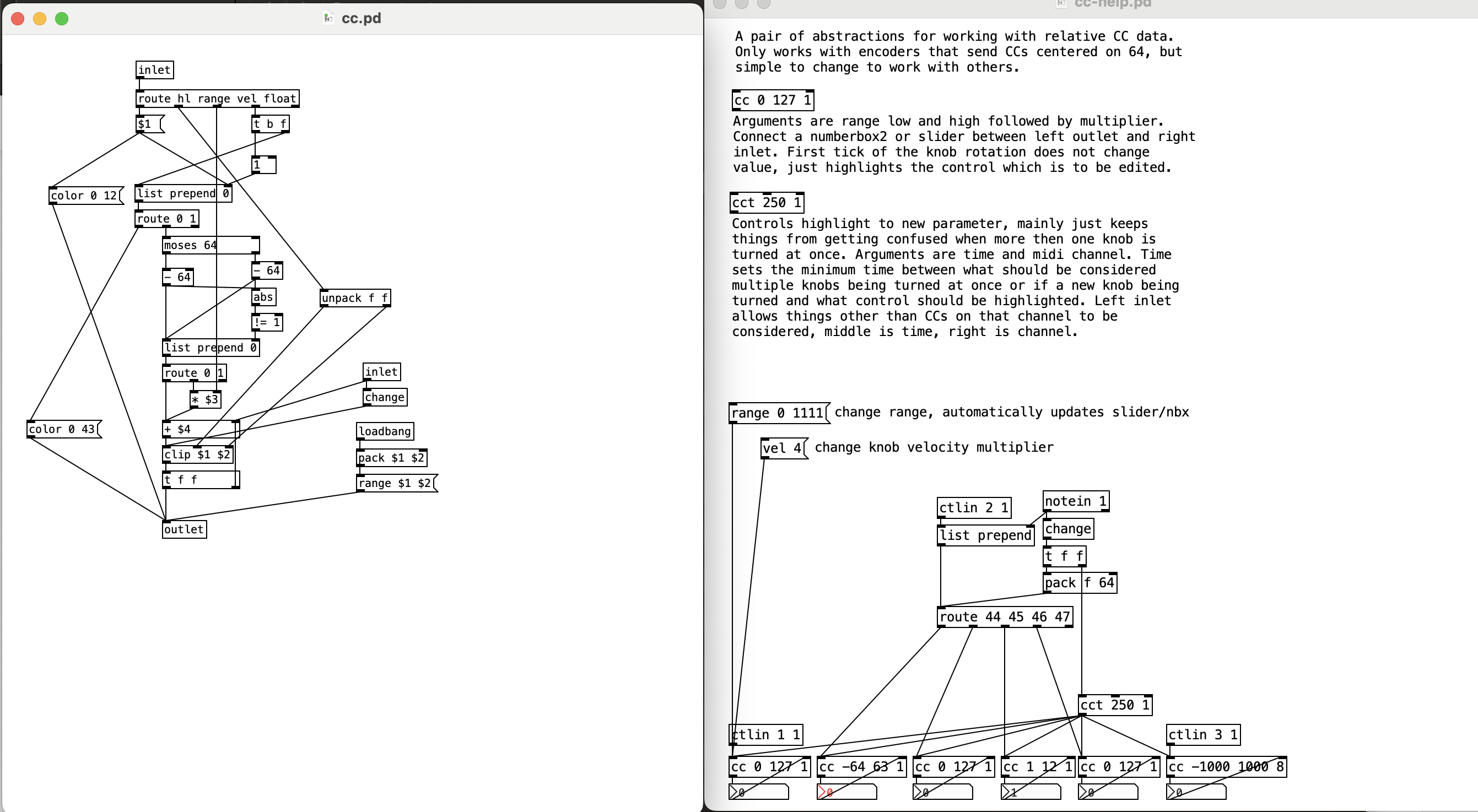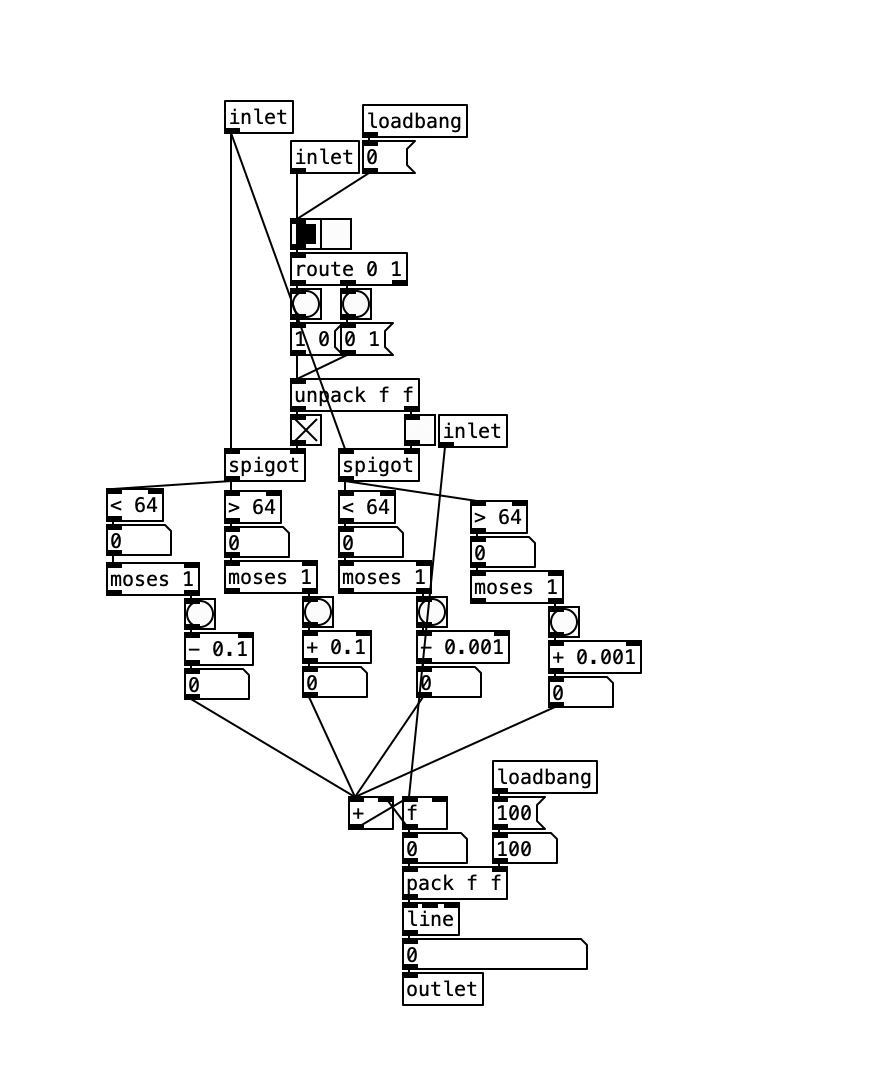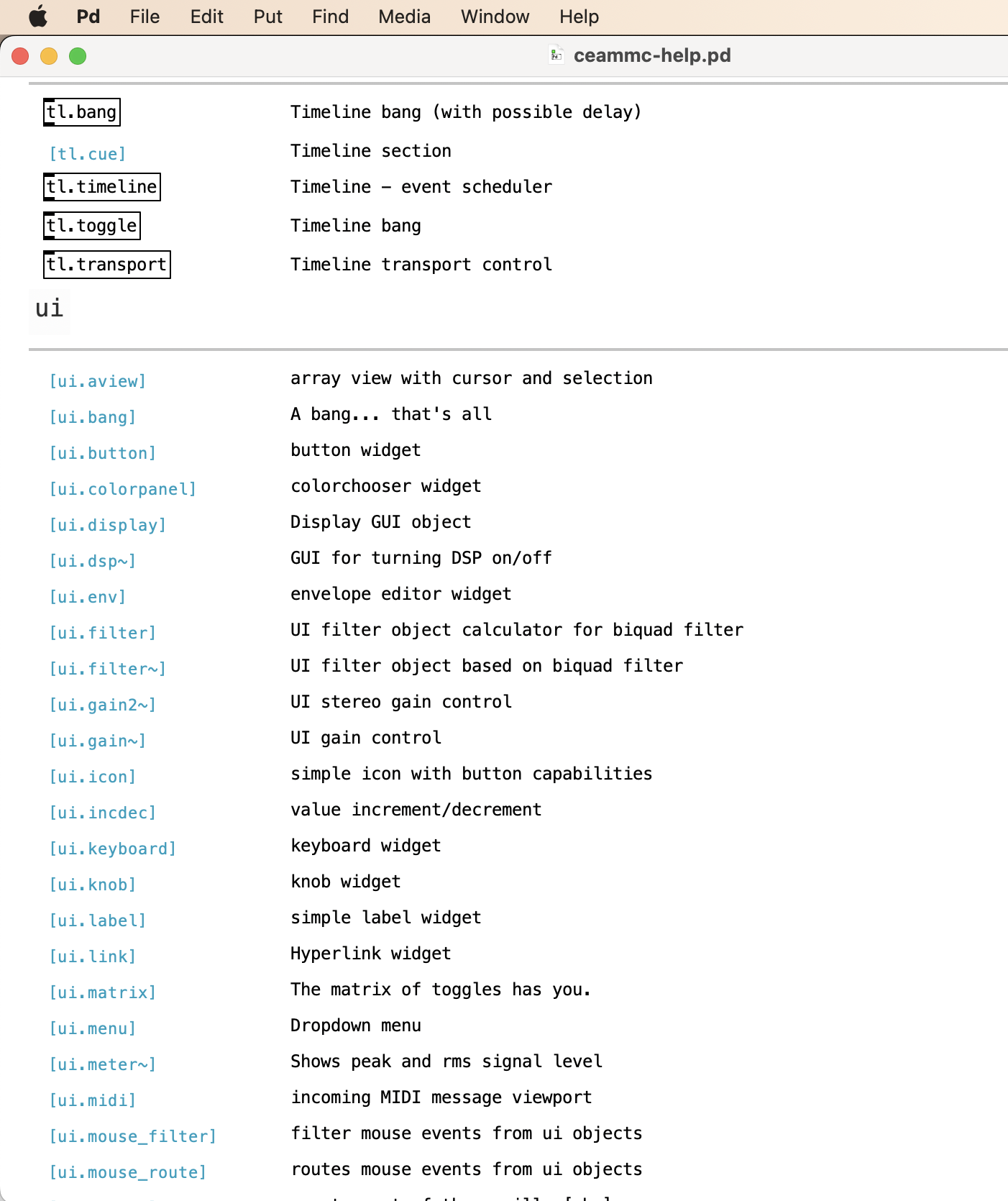Signature
-
esaruoho
posted in patch~ • read more@mario said:
This is the hAcKAI LPureData 8 v0.2, it's now possible to get presets from the controller
http://mbuoninfante.tumblr.com/post/152204960890/hackailpuredata8-v02
hi are you able to modify this so that it could load up a LPD8 preset (.lpd8)?
lpd8_preset_2017_05_15_for_multimagic.lpd8.zip -
esaruoho
posted in technical issues • read more@oid said:
@esaruoho My abstraction here should do what you need. You can change the knob velocity and it can be used to manage multiple parameters with a single encoder. Another one of those patches I should really finish up and put it somewhere that people can find it.

so it seems that this only works with rotary encoders.. or did i misunderstand? i guess i'll have to write some touchosc stuff that is rotary knobs and hope for the best

-
esaruoho
posted in technical issues • read morei used to have a faderfox uc4 and a 8 rotary knobs for my 8 sample-loopers.
i sold it for some reason, because BCR2000 was better. then i upgraded to TouchOSC.
and checked out a gig recording from 2017 within which i was using the uc4.
and it made me think, i want really slow (think radio frequency tuning slow) knobs that just keep adding or subtracting from the current situation.
how would one go about doing that within puredata? i don't have a problem using objects from the ELSE library, if there are such?
rotkno.pdhere's what i was working with.
what within PD could i use to control this? -
esaruoho
posted in technical issues • read morewow, even having one ceammc ui.menu displaying results in the else/multi.vsl's grinding to a halt updating-wise, no more being able to draw content onto them. looks like i'll not be able to use them then

-
esaruoho
posted in technical issues • read more@seb-harmonik.ar said:
@esaruoho compiled objects (unfortunately) can't be created that way.
you have to use[declare -lib ceammc]and then[ui.menu]thanks!
i .. really .. had no idea. it's a big TIL day for me. -
esaruoho
posted in technical issues • read more@60hz said:
What you displayed is the global ceammc help.
You can click on the link [ui.menu] in runmode it should open [ui.menu] specific help.Also, I did rewrite the [ui.menu] help a bit...
EDIT: i tried adding
[ceammc/ui.menu]to a script of mine, and all i see is this:

weirdly enough, the cyan text CAN be clicked on from the help, but i dunno why i can't just add it as an object to a script of mine? like what am i missing here?
EDIT2: i had to open the help, then select and copypaste the object, and then i was able to add it. it made the whole screen grey for a while until i clicked away.
i've never seen objects that behave like this. what..?? -
esaruoho
posted in technical issues • read more@60hz said:
i'm using PD 0.54-0. i got ceammc from dekken and the help looks like this:

is this a M1 Apple Silicon ARM thing, or is the dekken not complete, or..?
-
esaruoho
posted in technical issues • read morei'm currently using lists and pack/unpack to feed them to 10 frequency overtone generator abstractions.
but i'm wondering, is there a better way to pick frequencies from a list, or a large list, larger than 10 frequencies, so that they can be picked at will. and also, can the frequencies have a larger description.like "440hz A-note traditional" would, when picked from the dropdown menu, send 440 to the outlet.
Something like that? -
esaruoho
posted in technical issues • read morehi, let's say i'm sent a 440hz tuning fork recording. i.e. someone gets a microphone, hits a tuning fork and waves it around the microphone. how would i go about using PD to analyze it for "main frequencies"? i mean, like, let's imagine that the 440hz tuning fork does not only play 440hz but also plays say 30 or 50 harmonic overtones of it, like a piano might (i guess?)
what would the process be of outputting this kind of frequency analysis data out of a recording, using PD?
-
esaruoho
posted in technical issues • read moreIs it possible for an array to somehow be used for smooth ramp ups and ramp downs of parameters?
What I'm thinking of is a method for cycling between 15hz and 8hz but so that it takes say an hour to get from 8hz to 15hz for instance?
like, how to use an array for stepping, so that there would be a glide going on where let's say you lower from 8.5hz to 8hz in 5 minutes, but then ramp up to 8.5hz back again in 15 minutes, and then for 25 minutes ramp up to 15hz? i would prefer to have this kind of control, but the milliseconds really throw me.
